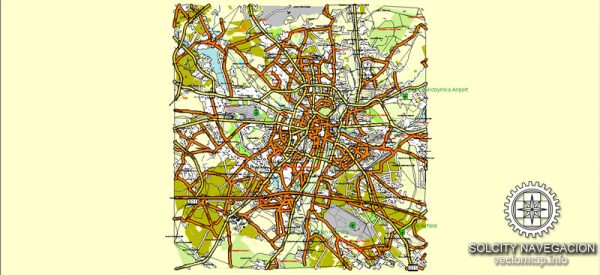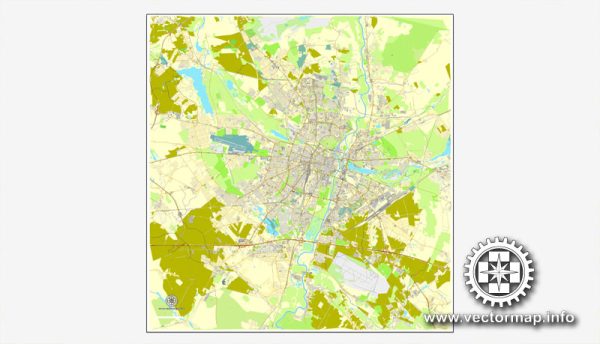Poznań, located in western Poland, has a rich history that spans over a thousand years. Its urban development reflects the city’s strategic location at the intersection of important trade routes and its role as a political, economic, and cultural center in the region. Here is an overview of Poznań’s history of urban development:
- Early History: The origins of Poznań date back to the early medieval period when it was a tribal stronghold. In the 9th century, the area became part of the emerging Polish state under the rule of the Piast dynasty.
- Piast Dynasty and the First Cathedral: Poznań gained significance during the reign of Mieszko I, the first historical ruler of Poland. The first cathedral, dedicated to Saints Peter and Paul, was built in the 10th century, symbolizing the city’s growing importance.
- Trading Hub: In the medieval period, Poznań became a significant trading hub due to its location along the trade routes connecting Western and Eastern Europe. The city’s market square, established in the 13th century, became a focal point for commerce and social activities.
- Royal City Status: Poznań was granted city rights in the 13th century, which marked its status as a royal city. This brought about increased autonomy and privileges for the residents, contributing to the city’s growth and prosperity.
- Gothic and Renaissance Architecture: The late medieval period saw the construction of numerous Gothic and Renaissance-style buildings, including churches, townhouses, and defensive structures. The Old Town Square, surrounded by colorful merchant houses, is a testament to this period of architectural development.
- Swedish Invasions: Poznań faced significant challenges during the Swedish invasions of the 17th century, which resulted in the partial destruction of the city. However, Poznań managed to recover and rebuild in the subsequent years.
- Partitions of Poland: In the late 18th century, Poland was partitioned, and Poznań came under Prussian rule. This period brought about Germanization policies, but Poznań continued to be an important cultural and economic center for the Polish population.
- Interwar Period: After World War I and the restoration of Polish independence in 1918, Poznań became part of the reborn Polish state. The interwar period witnessed economic and cultural development, but World War II brought destruction and hardship.
- Post-War Reconstruction: Poznań, like many European cities, faced significant damage during World War II. The post-war period saw extensive reconstruction efforts to restore historical buildings and revitalize the city.
- Contemporary Development: In the post-communist era, Poznań experienced economic growth and modernization. The city has become a major cultural and economic hub in Poland, hosting international events and fostering a vibrant urban environment.
Today, Poznań’s urban landscape showcases a harmonious blend of historical architecture, modern infrastructure, and a dynamic cultural scene, reflecting its long and diverse history.



 Author: Kirill Shrayber, Ph.D.
Author: Kirill Shrayber, Ph.D.